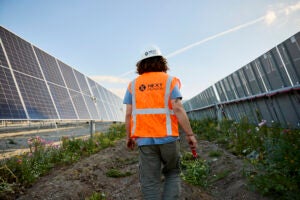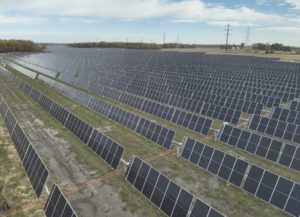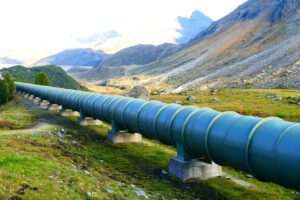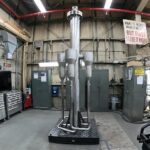Nuclear power can be a highly important component of a country’s energy security strategy. This is true for several reasons.
Nuclear plants provide consistent baseload power that is not dependent on weather conditions or a constant fuel delivery system. Unlike solar or wind energy, nuclear power can generate electricity 24/7 with very high capacity factors, often 90% or more, which ensures a steady and predictable energy supply.
Nuclear power reduces dependence on foreign energy imports, particularly coal, oil, and natural gas. Countries with nuclear power plants can generate substantial electricity domestically, enhancing their energy independence and reducing geopolitical vulnerabilities associated with energy supply chains.
Meanwhile, nuclear fuel (uranium) is relatively abundant and concentrated, meaning a small volume of fuel can generate massive amounts of electricity. This characteristic leads to more stable and predictable energy pricing compared to fossil fuels, which are subject to significant market volatility. Uranium reserves are widely distributed globally, and modern reactor designs can use fuel very efficiently. Some advanced reactor concepts even propose recycling nuclear fuel, potentially extending fuel availability for decades or centuries.
By incorporating nuclear power into their energy mix, countries can diversify their electricity sources, reducing risks associated with over-reliance on any single energy technology or fuel type. This diversification enhances overall energy system resilience.
The Risks in War Zones
However, nuclear power plants present significant vulnerabilities during wartime, which can pose catastrophic risks to both military personnel and civilian populations. For example, a direct military strike or significant damage to a nuclear power plant could cause a massive radiological release, creating an environmental catastrophe far beyond the immediate conflict zone. The Chernobyl and Fukushima incidents have demonstrated how nuclear facility damage can create long-lasting contamination spanning hundreds of square miles.
Nuclear power plants are high-value strategic targets. An attacking force might intentionally target these facilities to create widespread environmental disruption, cause massive civilian displacement, generate long-term economic and environmental damage, or potentially contaminate critical infrastructure and agricultural lands. Unlike conventional military targets, damage to nuclear facilities can create radioactive exclusion zones, render surrounding areas uninhabitable for decades, contaminate water sources, cause long-term health risks through radiation exposure, and disrupt agricultural and economic activities in vast regions.
Protecting nuclear facilities during conflict is extremely challenging. Reactors require continuous cooling systems, robust infrastructure maintenance, specialized personnel to prevent potential meltdown scenarios, and extreme security measures that become exponentially more difficult during active combat. Meanwhile, the mere threat of nuclear facility damage can create significant psychological pressure, potentially forcing strategic withdrawals or negotiations due to the potential for catastrophic consequences.
A Real-World Problem
The risks associated with war and nuclear power are not just a thought exercise today—there’s been a real situation at hand for nearly three years. Russia invaded Ukraine on Feb. 24, 2022. Notably, the largest nuclear plant in Europe—the Zaporizhzhia facility, which has six VVER-1000 units each with a capacity of about 950 MW—was seized almost immediately by Russian forces on March 4, 2022. Fighting in the territory surrounding the Zaporizhzhia plant quickly raised concerns that its reactors could be critically damaged in the crossfire. Concerns were heightened in August 2022 when two of the four high-voltage (750-kV) offsite power lines to the site were damaged by an attack.
Representatives of the International Atomic Energy Agency (IAEA), including Director General Rafael Mariano Grossi, visited the plant in late August 2022 to assess the threat of a nuclear accident. Grossi addressed the United Nations Security Council via video link on Sept. 6, 2022, saying the establishment of a “Nuclear Safety and Security Protection Zone” was urgently needed at the Zaporizhzhia site to ensure that the physical integrity of the plant was not compromised.
While no agreement was ever reached to formally implement a protection zone at Zaporizhzhia, the IAEA has continued to closely monitor and assess the situation at the site on a daily basis. It has prioritized nuclear safety and security implications, alongside ongoing verification activities.
At the American Nuclear Society’s Winter Conference and Expo in Orlando, Florida, on Nov. 18, 2024, Grossi spoke about the work the IAEA has done in Ukraine during the war. He specifically highlighted an attack that had taken place just days before the Orlando event. “A tremendous, ferocious attack on Ukraine’s energy infrastructure reminded us once again that nuclear has sometimes unexpected challenges,” he said. Grossi noted that monitoring activities at a nuclear plant on the front lines of a war is “an amazing challenge.” Still, he said it was incredibly important for the IAEA to be there.
“This is why today I have teams of dedicated staff, not only in Zaporizhzhia, but also in Rivne, in Khmelnitski, in South Ukraine, in Chernobyl,” he said, referring to all the nuclear facilities in Ukraine, which total 15 operable reactors and four permanently shut down reactors. “Every three weeks crossing the front lines. I’ve done it myself five times. They do it all the time. And sometimes we’ve done it under fire. The proud flag of the IAEA, which represents us all, is there to remind those who are in conflict that nuclear energy is for peace.”
The nuclear industry has a safety maxim that posits “an accident anywhere is an accident everywhere.” In the case of war and nuclear power, the stakes are high for everyone and an accident must be avoided at all costs.
—Aaron Larson is POWER’s executive editor.











